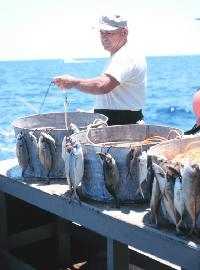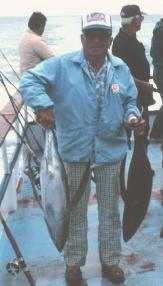|
"We applaud the Council for taking the historic step of prohibiting the use of pelagic longlines in U.S. West Coast waters," said Ken Hinman, president of the National Coalition for Marine Conservation. "Too often our fishery managers wait until a crisis develops before acting. It is encouraging to see managers take precautionary action to safeguard ocean health as well as the future health of our fishing industries."
The Council made its final decision Wednesday after a more than two year process, hearing arguments from conservationists, recreational fishermen and commercial fishers. The decision came despite a strong push by a segment of the commercial fishing industry to allow longlining.
Under the final decision, fishers will still be able to apply for an exempted fishing permit to test new longline gear. The PMFC will create strict guidelines limiting the use of such permits, however, to ensure that they are issued only for genuine
research, and not for covert commercial fishing, noted
Shana Beemer, fisheries policy analyst at the National
Audubon Society.
"By doing the right thing upfront, the Pacific Council will
prevent the crisis we're seeing in the groundfish fishery,"
Beemer said. "These modest regulations come at an
important time as displaced groundfish fishermen may
begin targeting highly migratory species."
|



